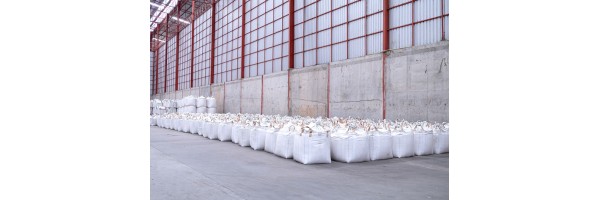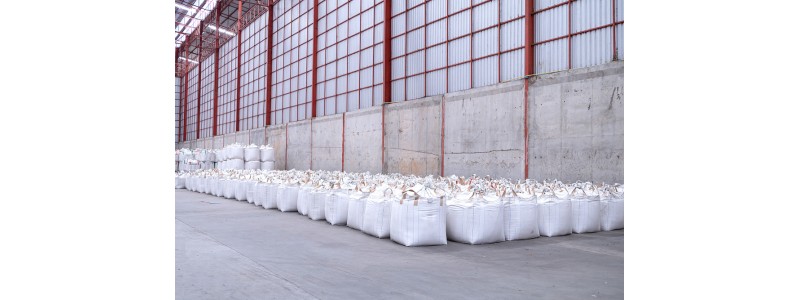
FIBCs are made using polypropylene woven fabrics which utilises a number of processes and the expertise of technicians. This fabric is stabilised against UV degradation. Virgin polypropylene fibres are an extremely versatile material that is used extensively for manufacturing bulk bags.
For our latest blog, Centurion Packaging is going to talk you through the steps of making bulk containers.
10 Steps to Create Bulk Containers
Extrusion and Winding - Using a mix of pure ingredients viz. polypropylene granules, UV Master Batch, calcium carbonate and sometimes colour pigment which is melted and shaped into tapes in an Extrusion plant. Throughout this process, the tensile durability of the tape will be checked. The tapes are reeled on bobbins which are stored and loaded later onto looms ready for weaving.
Weaving - The bobbins of tapes formed earlier is loaded onto weaving looms which can be Circular Looms or Flat Sulzer looms (depending on the user’s requirements). This is where the fabric is formed for manufacturing bulk bags. This material is also used for duffle, bottom and top spouts.
Lamination - Depending on the customer's requirements, the weaved fabric can be laminated with a semi-clear PP film which is bonded to the woven material, creating a moisture barrier.
Regular, uncoated polypropylene fabric material is breathable which means it is not suited for products like sugar and salt which should never be exposed to water. This includes water that gets sucked from the moisture in the air.
Coated bulk containers are convenient for transporting of light powdery products such as flour, as they could sift through uncoated bags when moved or shaken.
Cutting - The polypropylene woven fabric (in the form of rolls) fed into an automatic cutting machine where it is cut into different panels of a specific size. This automatic process assures the uniformity in size of the cut panels, which are now ready for stitching or printing.
Printing - Once the fabric cut panels arrive after cutting, they are added to a printing machine where the logo/artwork impression is made over the fabric. The artwork or logo can be up to four colours which can be easily reproduced.
Webbing - The loops of the bulk container used to lift the kits are now made. The bigger tapes of polypropylene are weaved together on needle looms to give them the shape of webbings which is cut into a specific size and stitched to the bag which forms the lifting loops of the bags. The straps are white as standard, but they can also be made in any desired colour.
Sewing - The fabric cut panels, webbings, spouts and duffle components are brought together and stitched by tailors to give shape to each bulk container. The bags are rigorously checked by qualified supervisors to make sure there are no defects.
Inspection - A technically qualified person will check the quality of the bags and ensure they are safe to use.
Cyclic Top Lift Test - Some randomly selected bags are picked from production and will be subjected to Cyclic top lift test on the test rig. This ensures that the safe working load criteria for the bulk bag are met.
Packing - Following the inspection, bags are folded and placed inside a bale press machine and packed on pallets which are ready to be loaded into a container.
Get in Touch for More Information
If you have any questions about the manufacturing process of bulk containers, please contact us today.
Centurion Packaging has over 35 years of experience in supplying woven polypropylene products to a number of industries.

 5% OFF YOUR FIRST ORDER OVER £50! JUST USE COUPON “MY1STORDER” AT THE CHECKOUT FREE NEXT DAY DELIVERY FOR MOST UK MAINLAND ORDERS, PLEASE SEE T&C'S
5% OFF YOUR FIRST ORDER OVER £50! JUST USE COUPON “MY1STORDER” AT THE CHECKOUT FREE NEXT DAY DELIVERY FOR MOST UK MAINLAND ORDERS, PLEASE SEE T&C'S
.jpg)